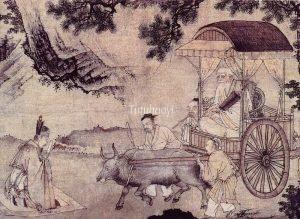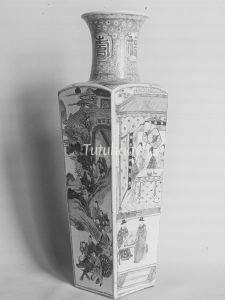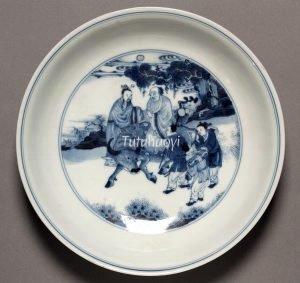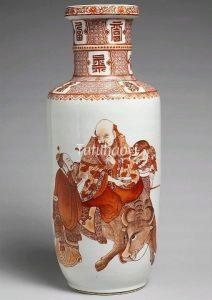Laozi exiting Han’gu Pass
老子出关
© Tutuhaoyi.com owns the copyright of the description content for the images attached. Quoting all or part of the description content on this page is permitted ONLY IF ‘Tutuhaoyi.com’ is clearly acknowledged anywhere your quote is produced unless stated otherwise. (本页描述内容版权归Tutuhaoyi.com所有,转发或引用需注明 “Tutuhaoyi.com”, 侵权必究, 已注开源信息的条目除外。)
Laozi (Lao Tzu 老子) is a great ancient Chinese thinker, to whom a five-thousand-character book ‘Dao de jing 道德经’, or The Scripture of the Way and Virtue, has been attributed. He is regarded as the founder of philosophical Daoism (Taoism), daojia 道家, because of his profound insights to life and the world, and a supreme deity in religious Daoism (Taoism), daojiao 道教, and popular Chinese religious cults.
Legend goes that Laozi grew unhappy about the moral decay and decline of the society and decided to leave for the unsettled frontier in the west. A noble lie says that Yinxi 尹喜, the official in charge of Han’gu Pass 函谷关 on the border saw some purple clouds flying towards his direction, and then euphorically expected and welcomed the renowned master’s arrival. Yinxi managed to persuade the master to write down his wisdom before he began his new life as a hermit. The brief pamphlet, also named after its author as ‘Laozi’, enjoyed a long-lasting appeal, resulting in more than seven hundred commentaries devoted to it by men of letters throughout the long history of China.
See more images of Laozi on the signature buffalo here and discussion about pictorial parody of Laozi riding an ox in this blog.
Fig 1: Yinxi welcoming Laozi at Han’gu Pass, hanging scroll, ink and light colours on paper, Shang Xi (active early 15th century), courtesy of MOA Museum, Atami, Japan
Fig 2-3: porcelain vase with overglaze enamelled decoration, Kangxi period (1662–1722), Qing dynasty, courtesy of the Metropolitan Museum of Art, NY
Fig 4: porcelain dish with underglaze blue decoration, Yongzheng period (1723–35), Qing dynasty, courtesy of the Cleveland Museum of Art
Fig 5-6: porcelain vase with overglaze iron red enamelled decoration, 19th century, courtesy of Musee Guimet, Paris





